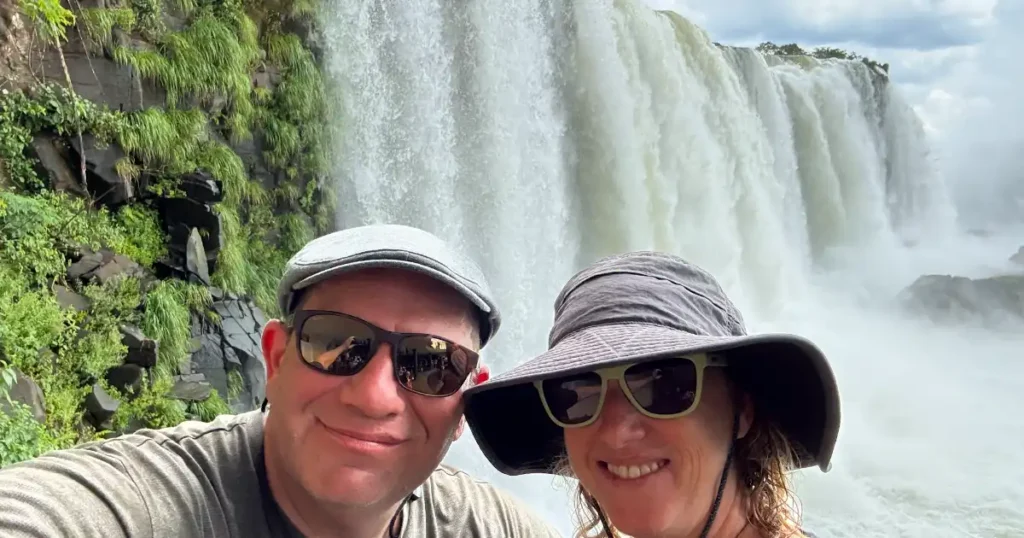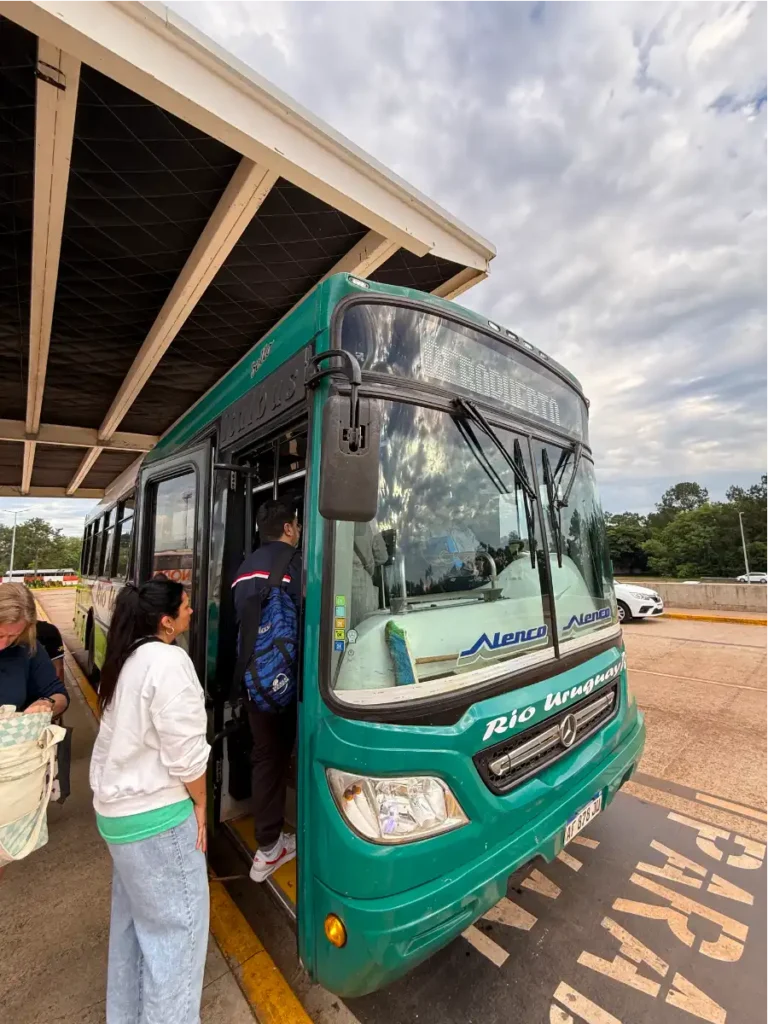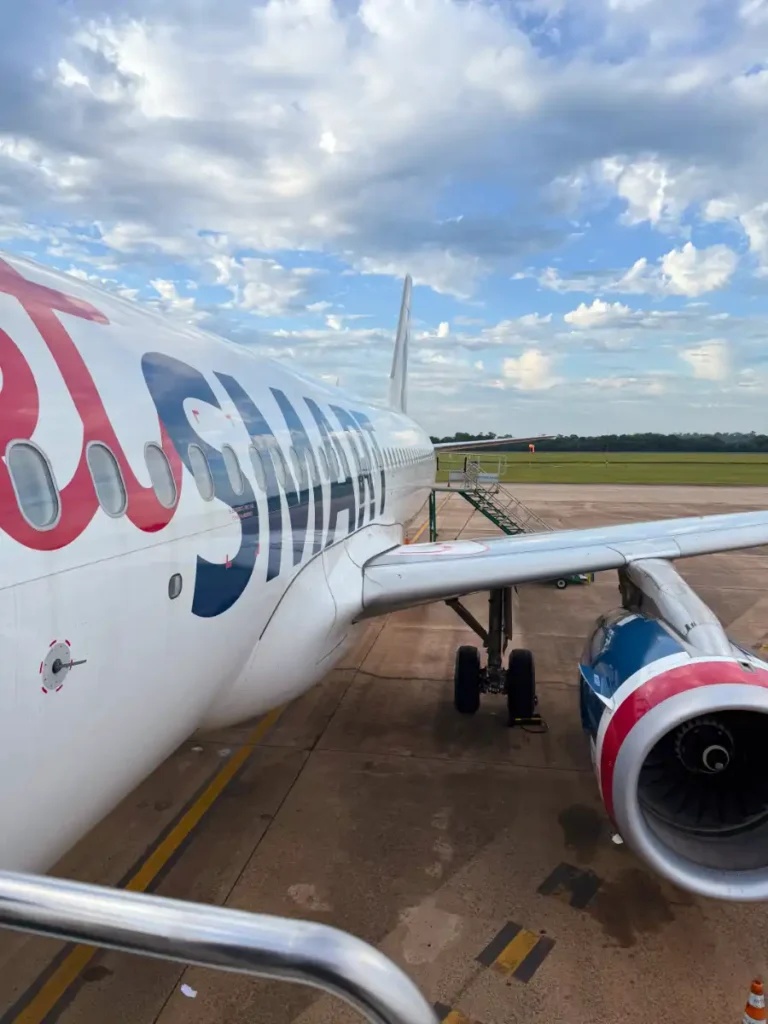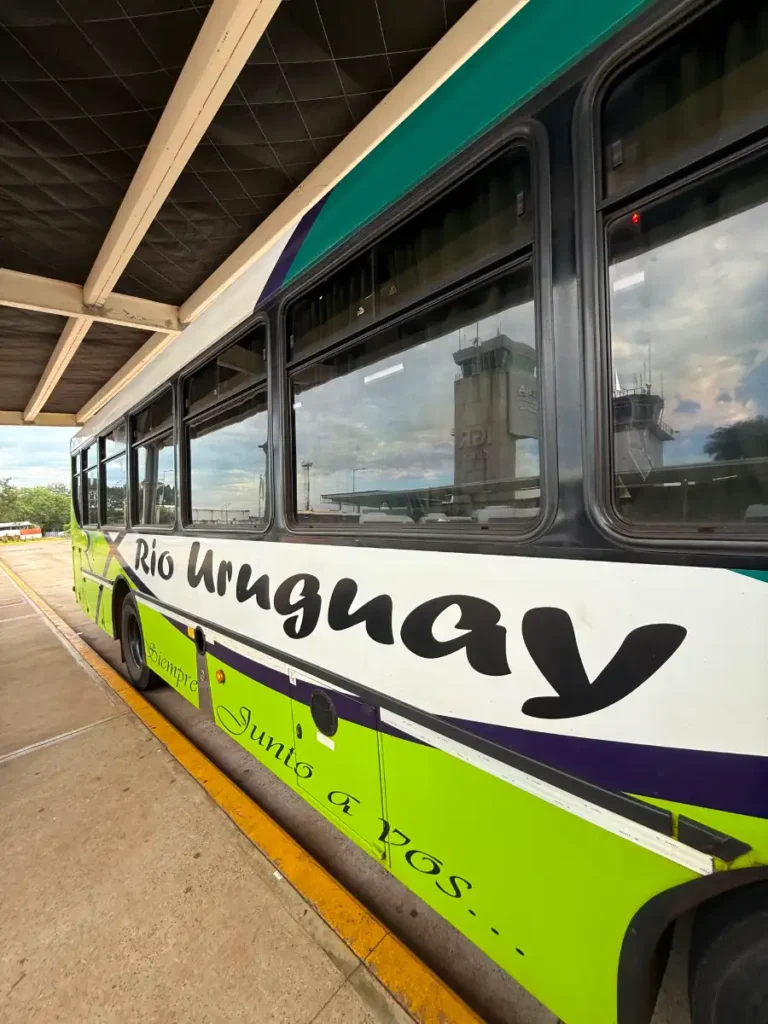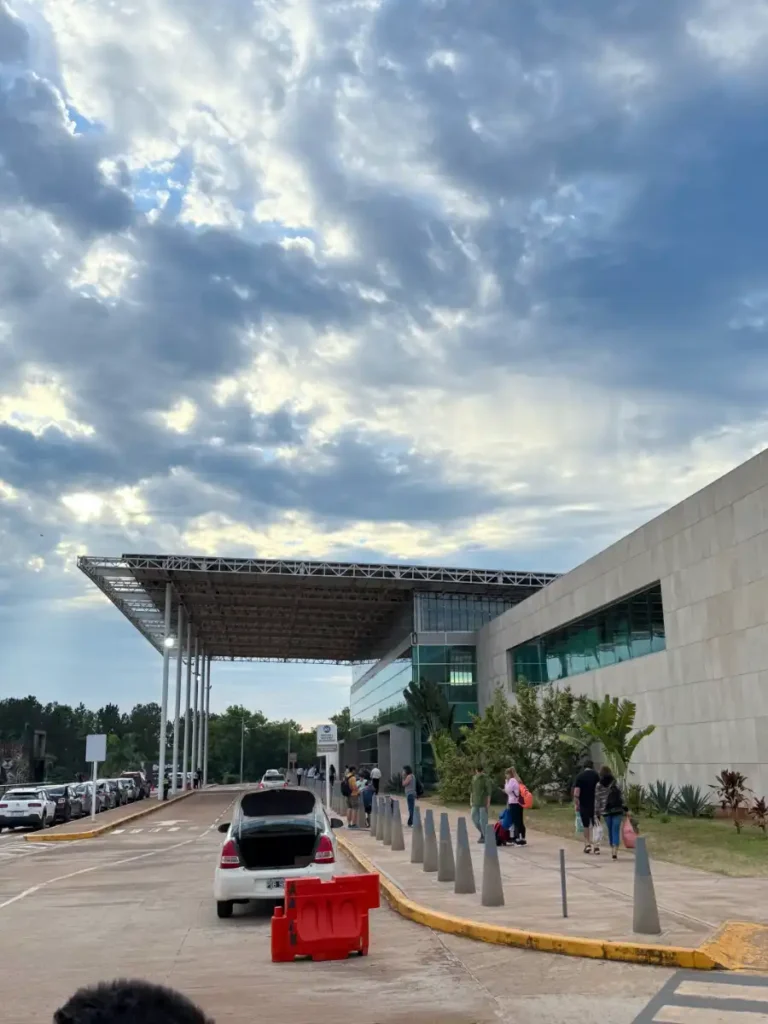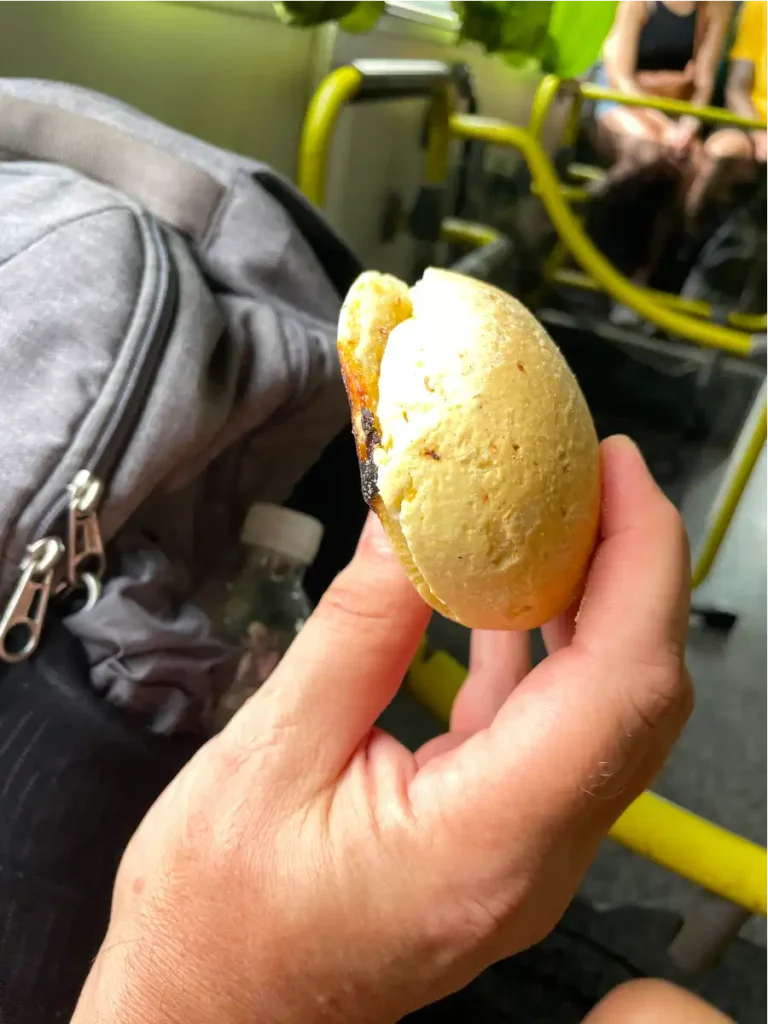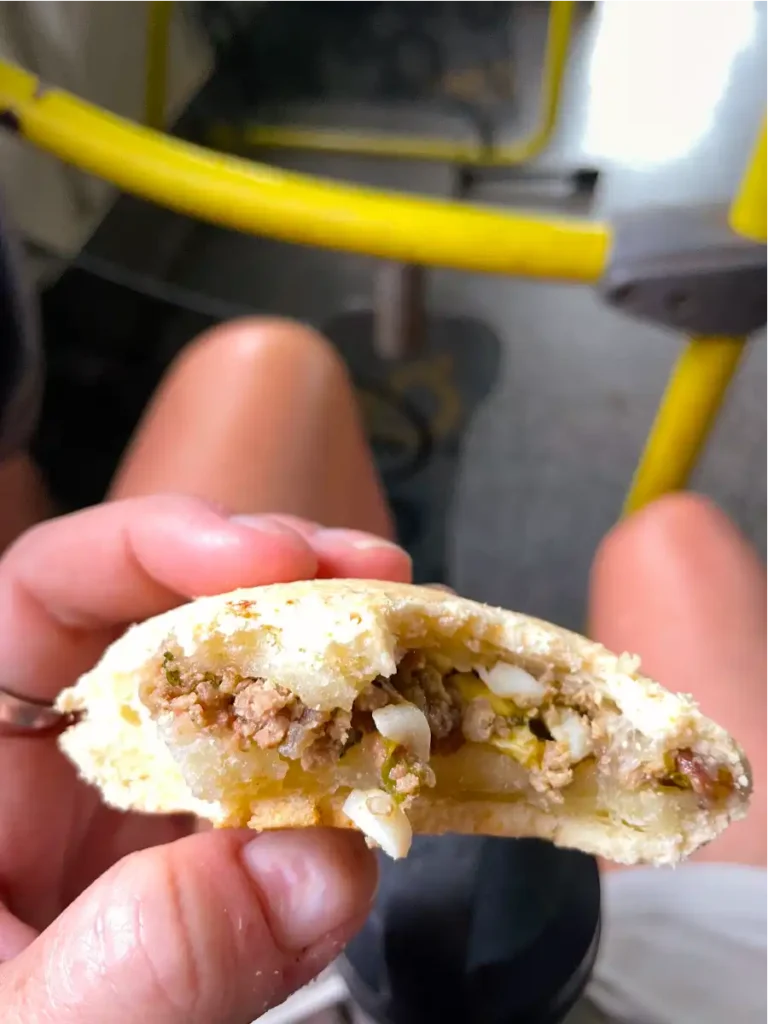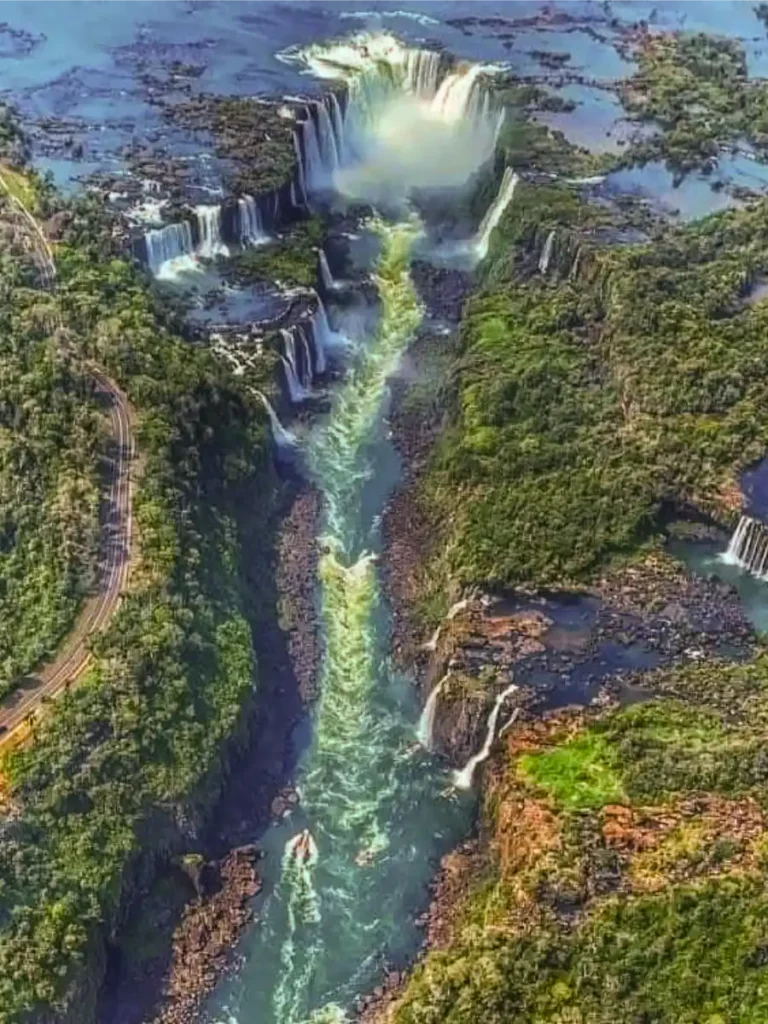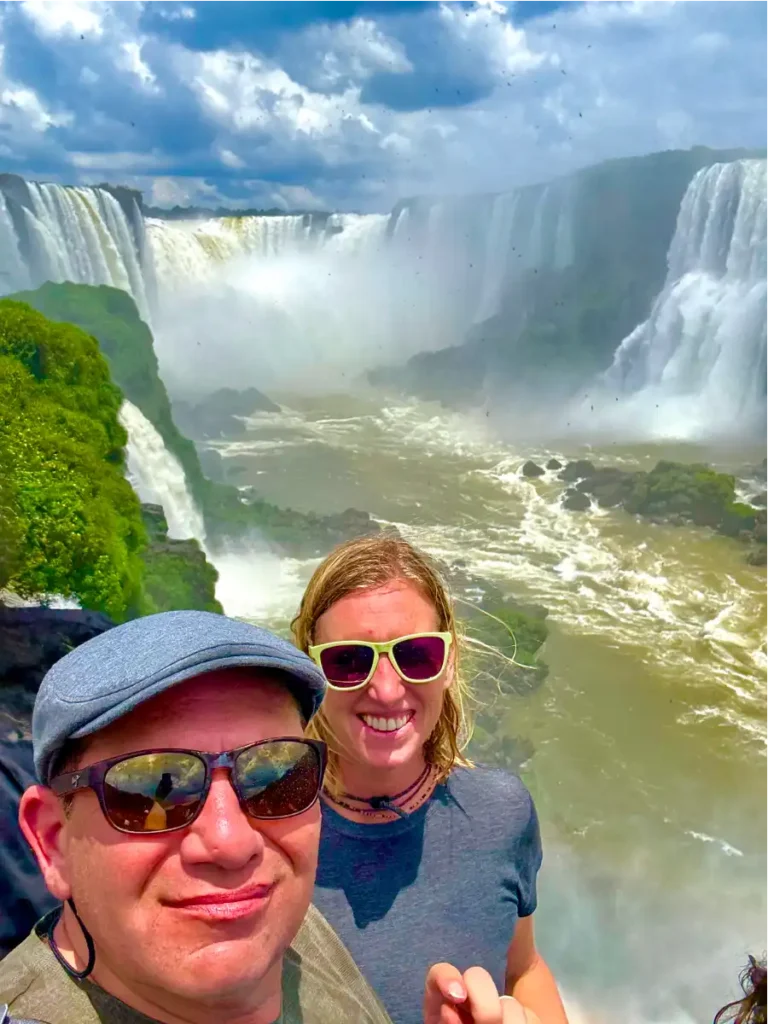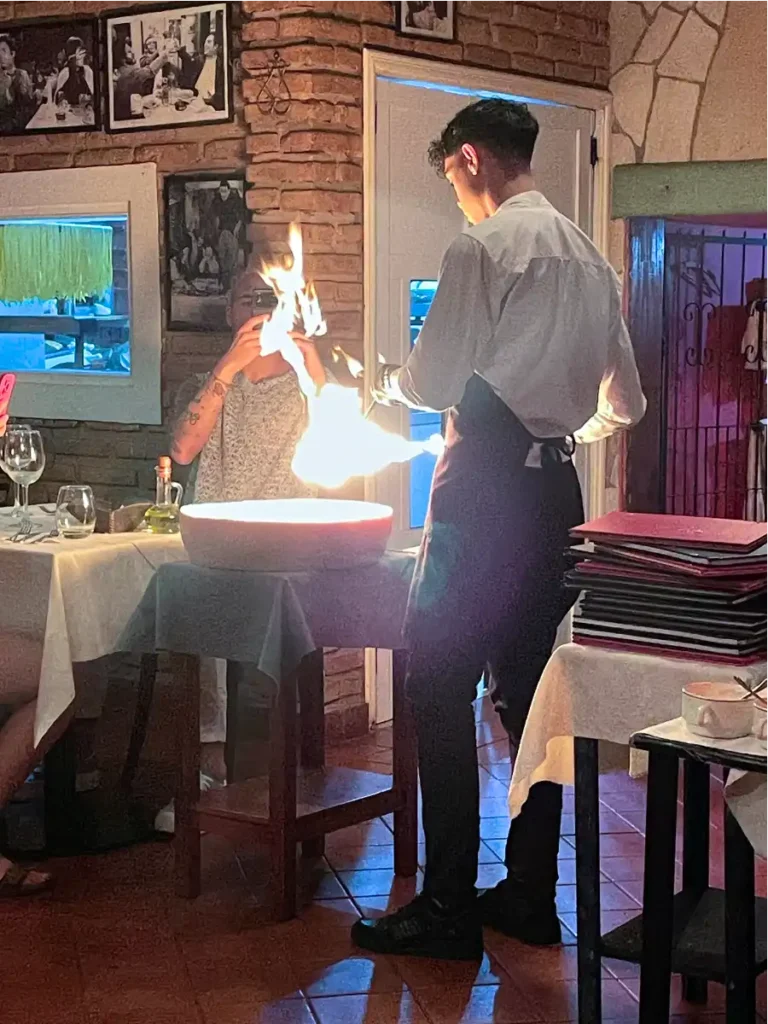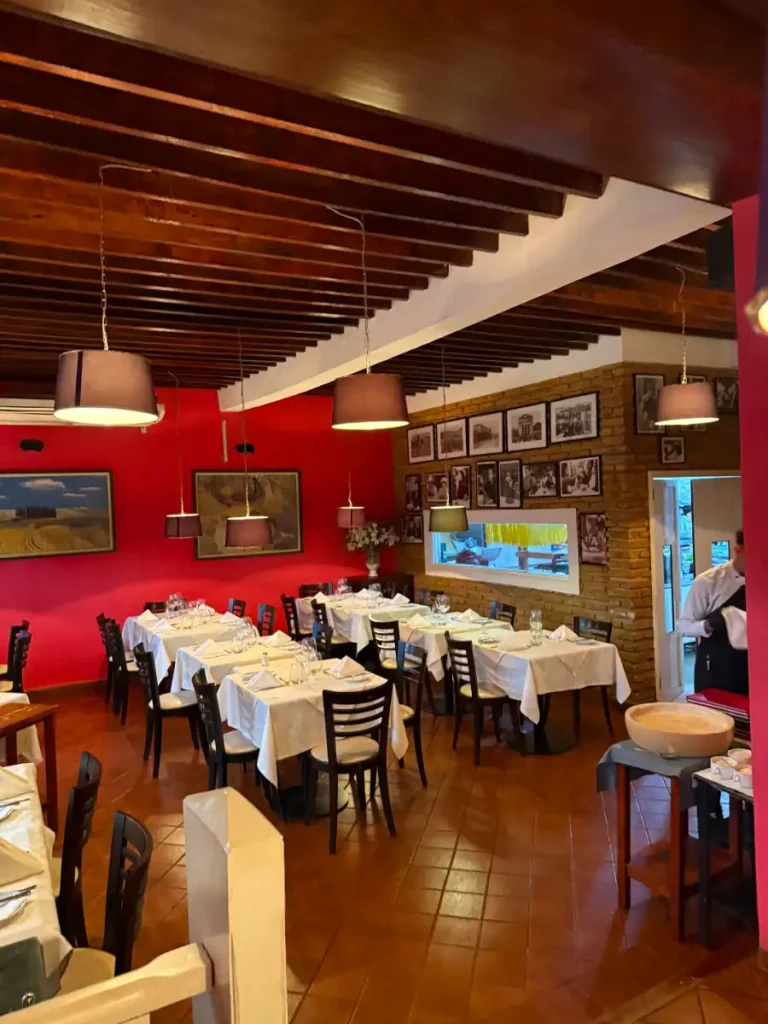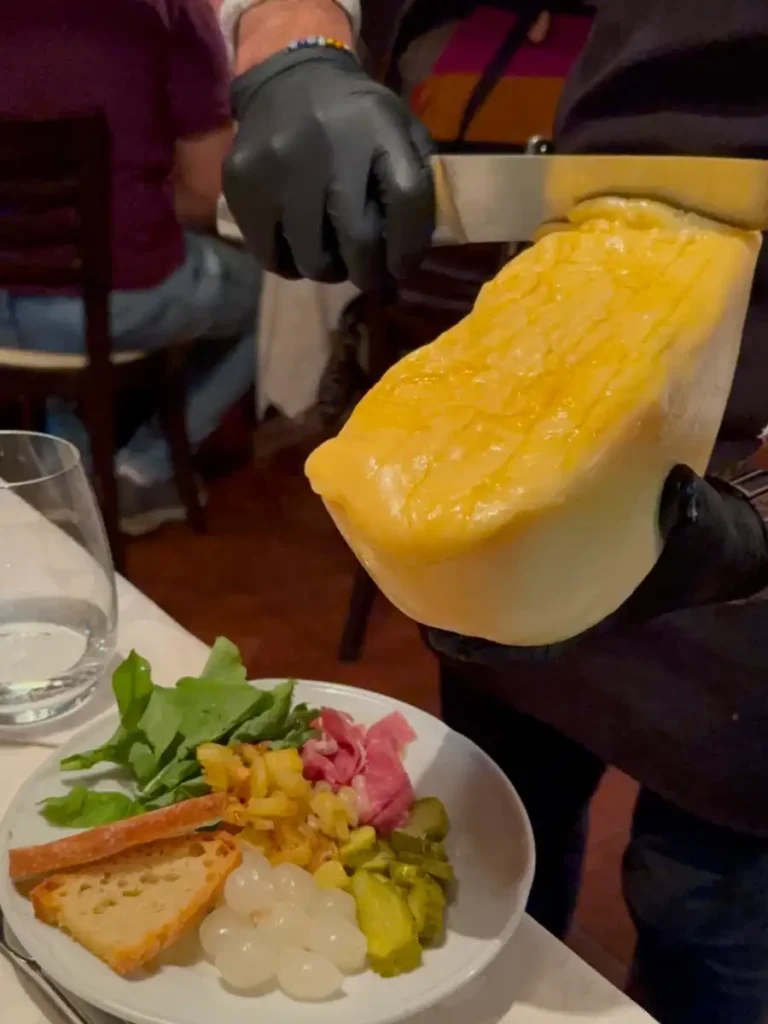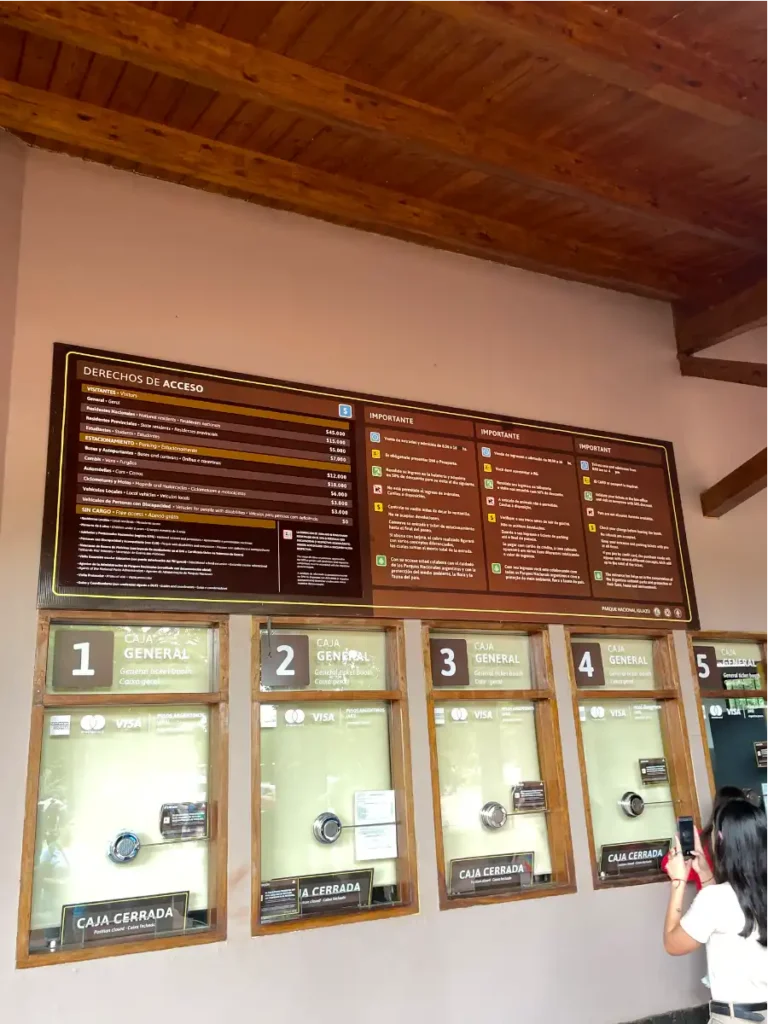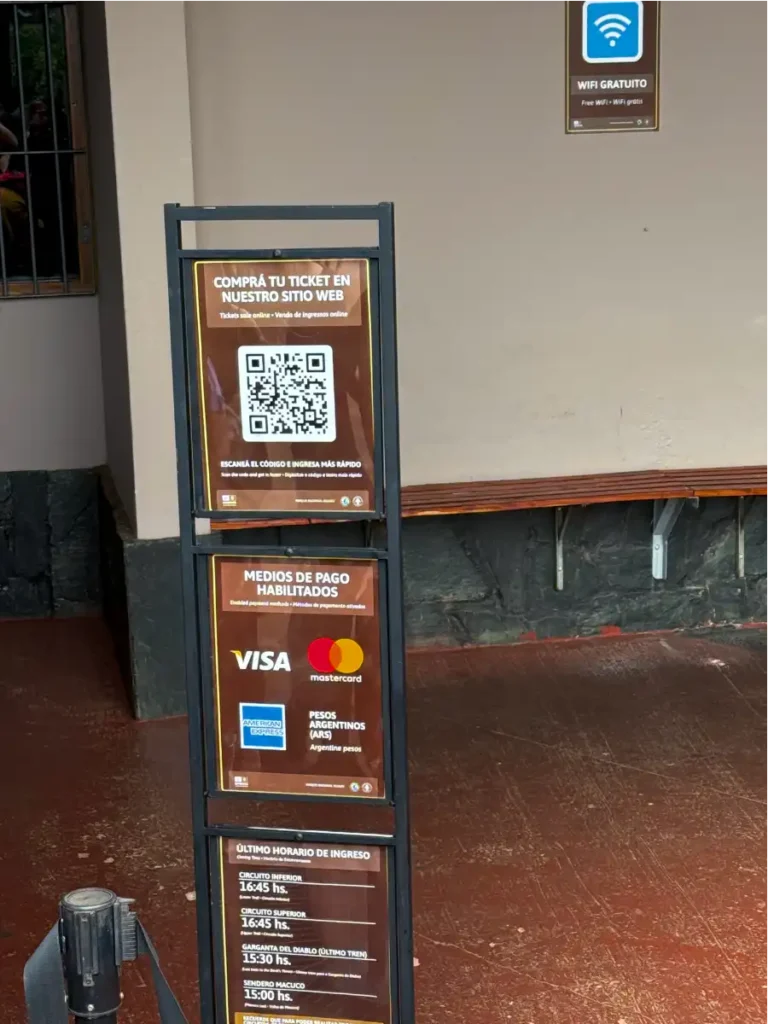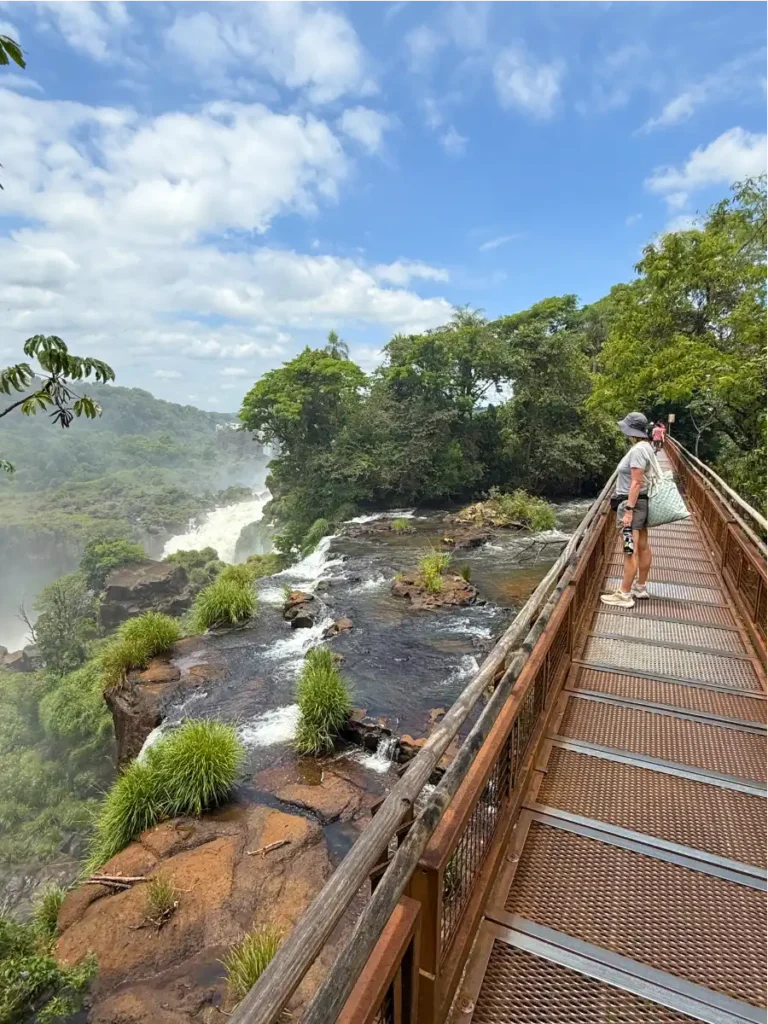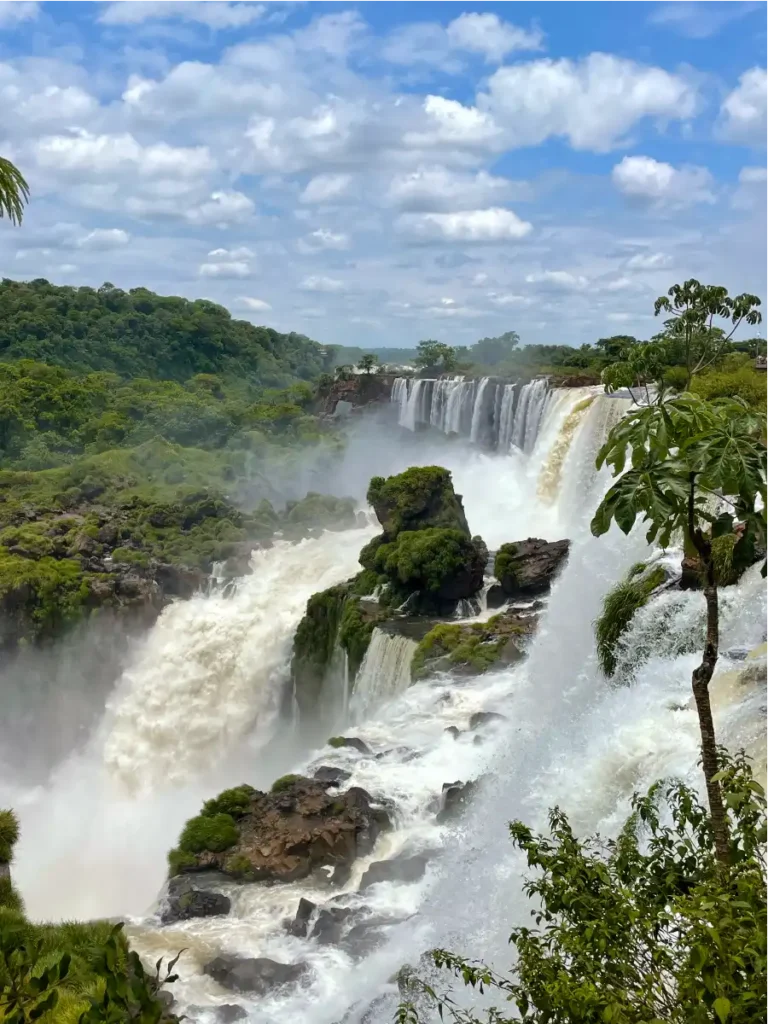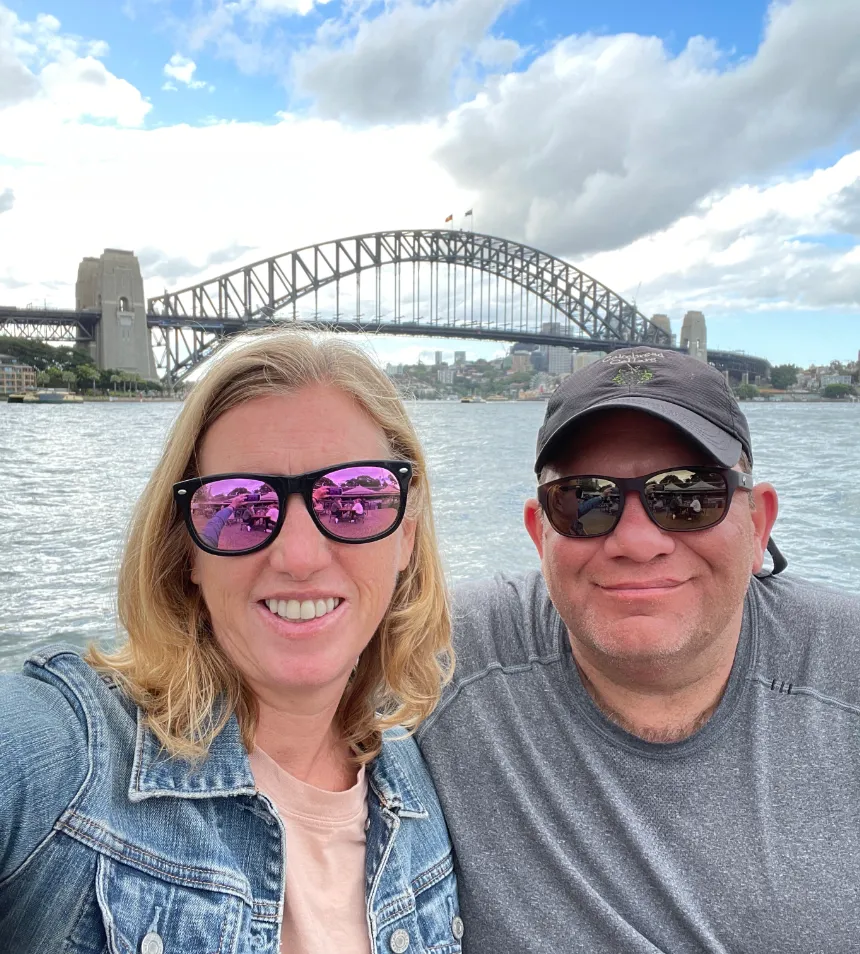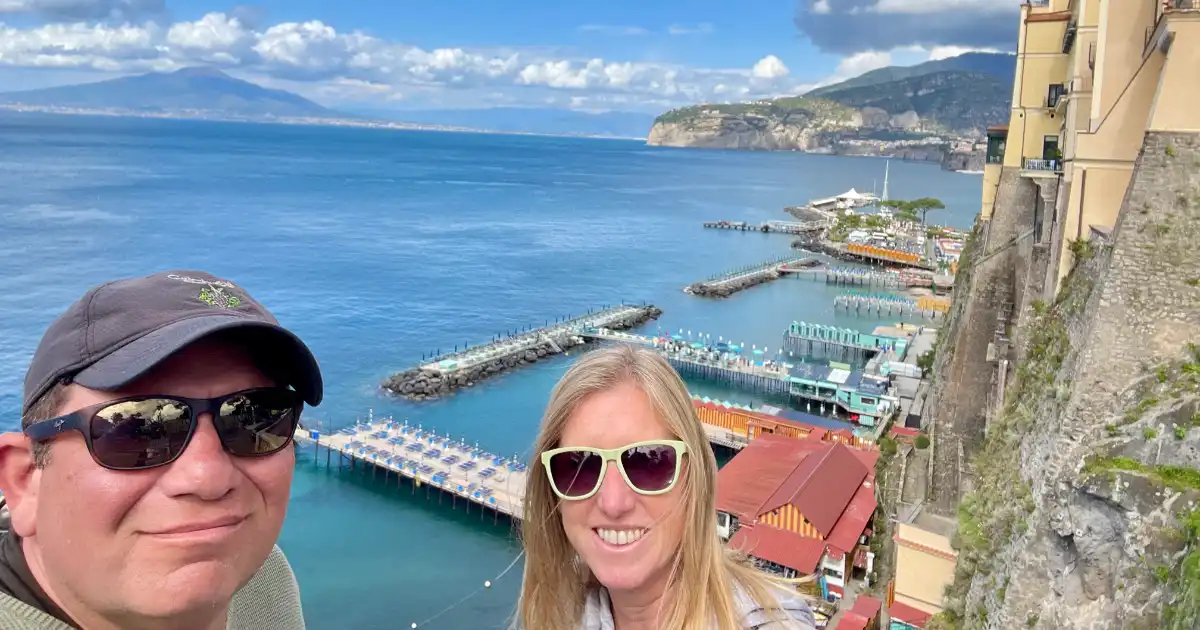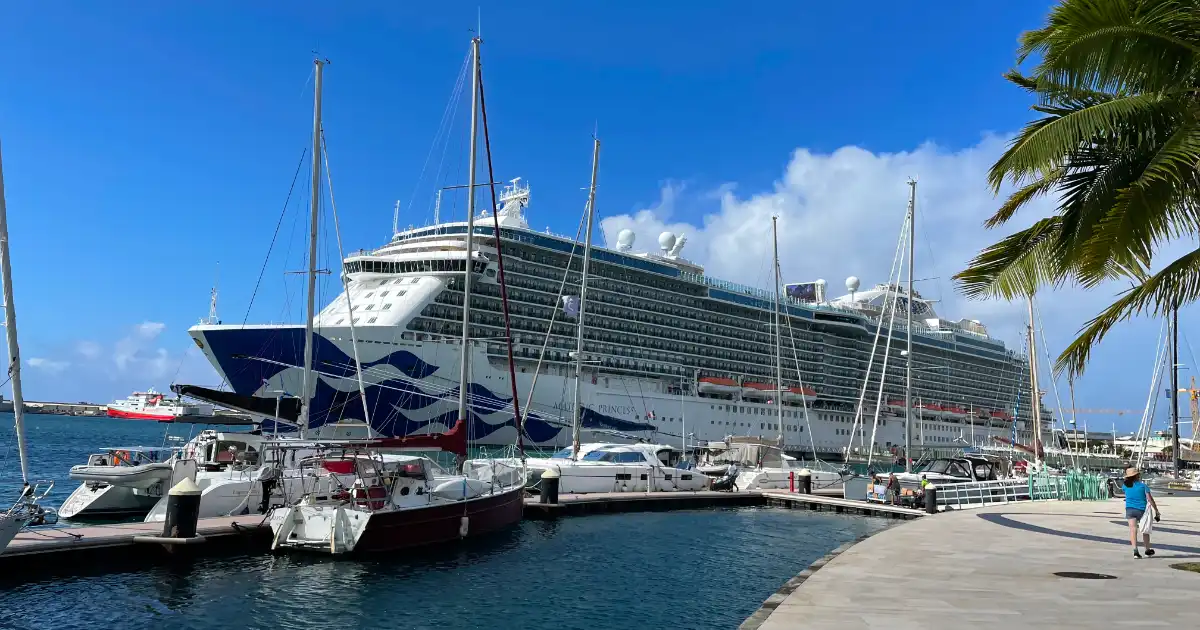Iguazú Falls, Our Itinerary, Full Cost and Invaluable Tips
Prepare to be amazed by one of the most stunning natural wonders in the world: Iguazú Falls. Straddling the border between Argentina and Brazil, this awe-inspiring UNESCO World Heritage Site features 275 cascading waterfalls spread across nearly two miles of lush subtropical rainforest. Some waterfalls tower over 260 feet and their thunderous roar and misty spray create an unforgettable spectacle that captures the hearts of millions of visitors each year.
We recently embarked on an incredible two-day journey to explore both sides of this breathtaking landmark, starting in Buenos Aires. Our adventure was packed with jaw-dropping views, encounters with unique wildlife, and practical insights to help you make the most of your visit.
In this guide, we’ll walk you through everything you need to know to plan your unforgettable trip. From visiting the Brazilian side on day one to exploring the Argentinian side on day two, we’ll share insider tips, cost breakdowns, and how we managed to catch our 5 PM flight home—all without missing a single highlight.
Whether you’re eager to stand in the mist of the falls, capture breathtaking photos, or experience the region’s unique charm, this guide has you covered.
Table of Contents
QUICK NOTE: This post contains affiliate links and Two Traveling After One may receive a commission for purchases made through these links, at no extra cost to you.
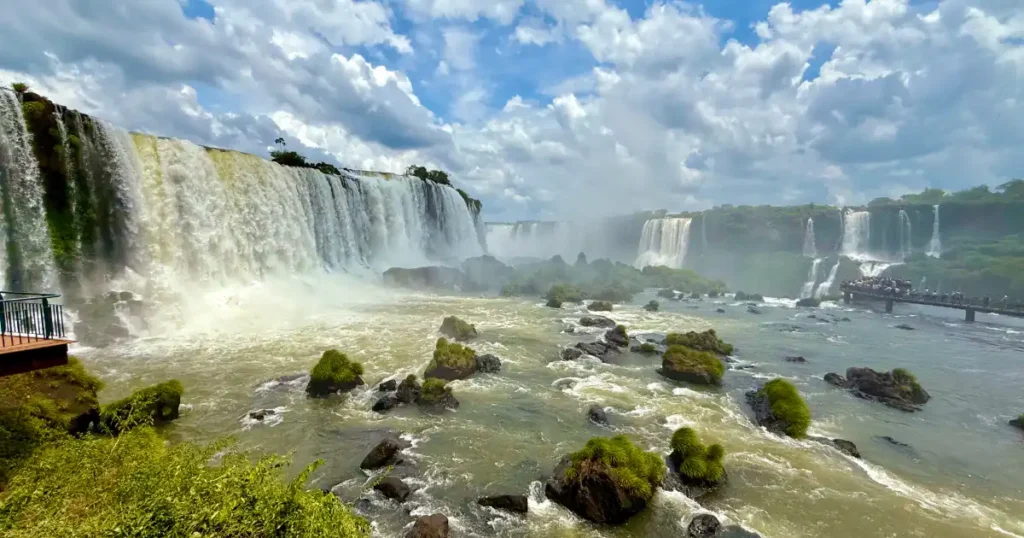
Why Visit Iguazú Falls?
Nestled in the heart of South America, Iguazú Falls is more than just a waterfall; it’s a natural masterpiece. Its size and beauty make it one of the world’s most iconic waterfalls, rivaling Niagara Falls and Victoria Falls. Surrounded by dense rainforest, this destination offers more than just scenic views. It’s a haven for adventure seekers, wildlife enthusiasts, and anyone looking to connect with nature on a grand scale.
What to Expect on Your Two-Day Trip
Our two-day itinerary was designed to maximize every moment, and we’ll take you step by step through our adventure:
Day One: Discover the Brazilian side’s panoramic vistas and thrilling viewpoints.
Day Two: Immerse yourself in the Argentinian side’s close-up experiences and winding trails.
Along the way, we’ll detail where we stayed and what everything cost and share pro tips for efficiently navigating Iguazú National Park. Ready to plan your dream trip?
Getting to Iguazú Falls: The Start of Our Adventure
An Early Start in Buenos Aires
Our journey to Iguazú Falls began bright and early with a 5 AM flight from Aeroparque Jorge Newbery (AEP) in Buenos Aires. This smaller, modern airport is conveniently located in the city, making it an excellent choice for domestic travel. Three leading airlines offer flights to Iguazú: Jetsmart, Aerolíneas Argentinas, and Flybondi. We opted for Jetsmart due to its balance of price, schedule, and lower cancellation risk.
Booking Flights: What You Need to Know
When choosing your airline, research cancellation statistics to make an informed decision. Our round-trip tickets with Jetsmart cost $327, including a personal item. We paid to select our seats for extra comfort, a slight upgrade that made our travel experience smoother.
Getting to Aeroparque Jorge Newbery (AEP)
To catch our early flight, we pre-booked an Uber from our apartment in Palermo for 3 AM. The cost? A budget-friendly $6.64. Despite the early hour, our Uber driver was punctual and even waiting outside when we stepped out. If you’re worried about finding transportation at odd hours, rest assured Buenos Aires is a city that rarely sleeps.
Once at AEP, we found the airport easy to navigate. Security was quick and hassle-free, but one crucial tip: keep an eye on your gate number. Flight gates at AEP often change, and ours did, so staying alert saved us from unnecessary stress.
The Flight Experience
The flight to Iguazú was short and sweet, taking just two hours. However, if you’re flying with Jetsmart, don’t expect complimentary snacks or drinks—everything is available for purchase. Plan ahead if you’ll need a coffee or snack during the flight to keep your energy up for the adventure that awaits!
Check Out The Video!
Arriving in Puerto Iguazú: Starting the Adventure
Quick and Convenient Arrival
Traveling light without checked luggage, we breezed through the airport upon landing. Just steps outside the terminal, the Rio Uruguay bus awaited, making the transition from the airport to Puerto Iguazú seamless. Tickets for the bus are cash-only and cost approximately $11 USD for two people or 11,000 Argentine pesos. This direct and reliable bus service drops us off at Puerto Iguazú’s central bus station.
Planning: Tickets and Accommodation
Our first stop at the Puerto Iguazú bus station was the Rio Uruguay ticket window, where we purchased round-trip tickets for the 8:30 AM bus to the Brazilian side of Iguazu Falls. The total cost was 24,000 Argentine pesos or about $24 USD for two people.
Our choice to stay at a hotel directly across from the bus station proved a game-changer. It allowed us to drop off our bags and prepare for the day quickly. After checking in, we stocked up on essentials—water, sunscreen, bug spray, and snacks—at a small shop near the station.
Packing Essentials for Iguazú Falls
The subtropical climate around Iguazú Falls is vastly different from Buenos Aires. Even on cooler days, the humidity is high, so packing the right gear is critical. Here’s what we recommend:
- Sunscreen and a hat to protect against the intense sun.
- Bug spray to avoid pesky bites (a common issue—some visitors had visible welts).
- Comfortable walking shoes for navigating the trails.
- Water to stay hydrated throughout the day.
- Skip-scented products like cologne, which attract insects.
And one vital reminder: don’t forget your passport! You’ll need it to cross the border into Brazil.
On the Road to Brazil
With our essentials packed and tickets in hand, we boarded the bus to the Brazilian side of Iguazu Falls. Upon boarding, the driver tore off half of our ticket, so we carefully kept the other half and our return tickets for later. The bus was clean, air-conditioned, and comfortable—a welcome reprieve from the rising humidity.
Navigating the Border Crossing
Around 9 AM, the bus reached the border crossing into Brazil. Here’s an important tip: be ready to disembark quickly when the bus stops at the immigration terminal. Being one of the first off the bus helps you avoid long lines for passport checks.
The immigration process was straightforward:
- Each person went individually to the window for passport scanning.
- While efficient, modern border crossings no longer offer passport stamps—a disappointment for avid collectors.
After clearing immigration, it was time to reboard the bus. This is where the other half of your ticket comes into play—don’t lose it! You’ll need to purchase a new ticket to continue your journey without it.
A Tasty Treat En Route
While we waited for other passengers to complete immigration, a vendor boarded the bus offering Brazilian cheese bread filled with ham. At just 3,000 pesos (about $3) for a bag of three, these warm, cheesy bites were irresistible and the perfect snack for the journey ahead.
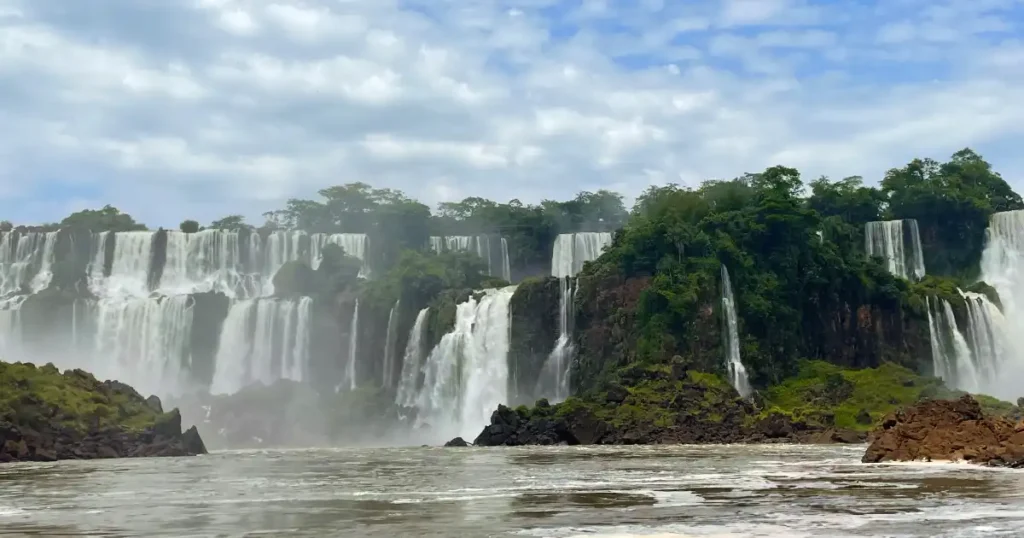
Reaching the Falls
Once everyone reboarded, the bus departed for Iguazu Falls. The short, scenic drive previewed the lush beauty to come. The drop-off point near the park entrance doubles as the pick-up location for your return trip, so take note of this spot before heading into the park.
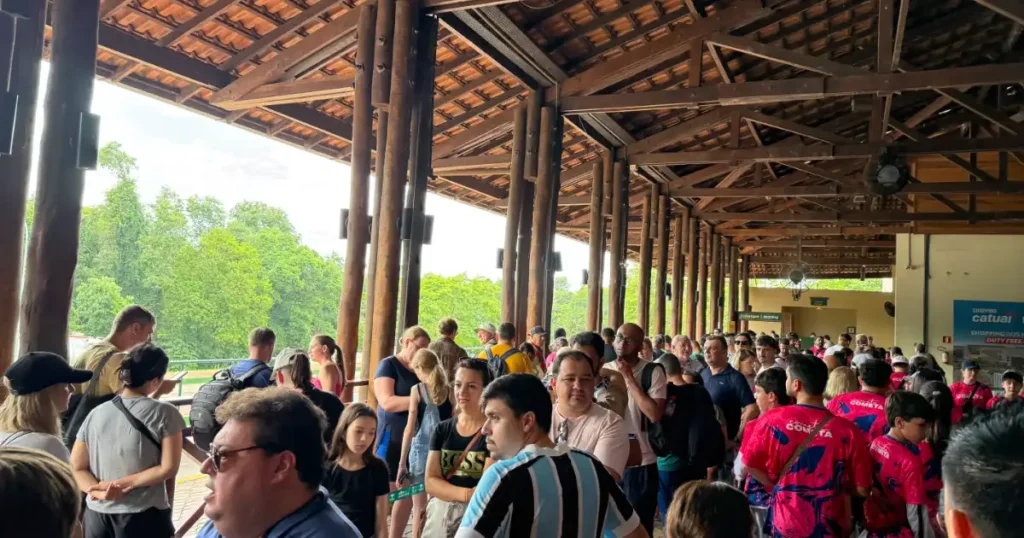
Into the Heart of Iguazu Falls: The Brazilian Side
After grabbing your entry tickets, the journey truly begins. Head into the large covered pavilion. If you’re planning to take the thrilling Macuco boat excursion, turn right to purchase tickets. This unforgettable ride costs $133.74 for two people, and it’s worth every penny if you’re ready to embrace the falls up close. Not interested in the boat ride? Skip this step and head left, past the gift shop, to join the line for the park buses. (Pro tip: Save the gift shop for later!)
We joined the bus line at 9:25 AM. Despite the bustle of school groups visiting that day, the line moved quickly, thanks to the efficient and frequent buses. By 9:40 AM, we were boarding and ready for adventure.
The park buses make four stops:
- The Long Hiking Trail
- The Boat Excursion
- The Falls Trail and Hotel das Cataratas
- The Devil’s Throat Lookout
If you’ve opted for the boat ride, get off at the second stop to begin your jungle train journey to the river. Starting here gives you plenty of time to dry off during the rest of your adventure. Otherwise, head to the third stop to start the Cataratas Trail, which offers incredible panoramic views of the falls. For those who prefer a less strenuous visit, stay on the bus until the fourth stop, where the Devil’s Throat lookout offers awe-inspiring views without the hike.
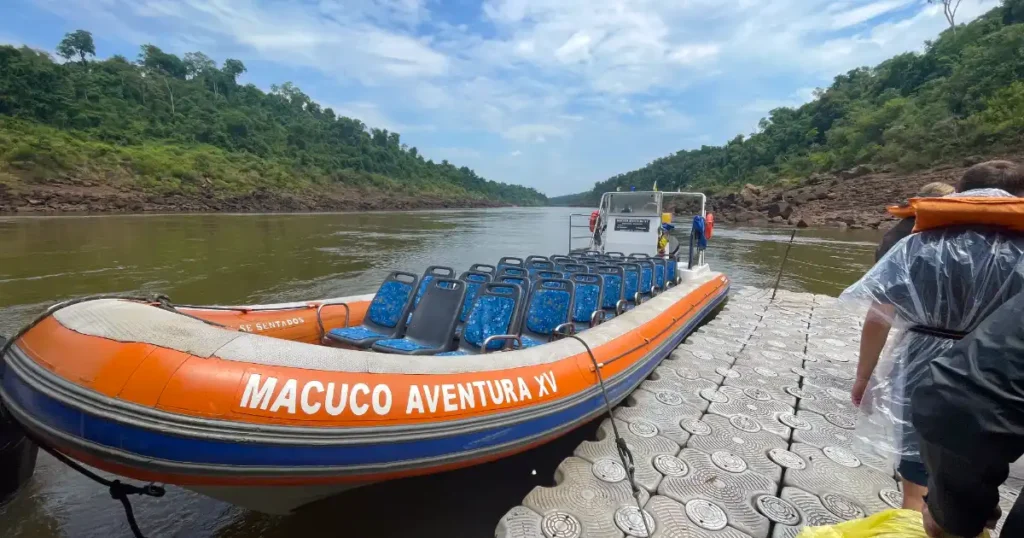
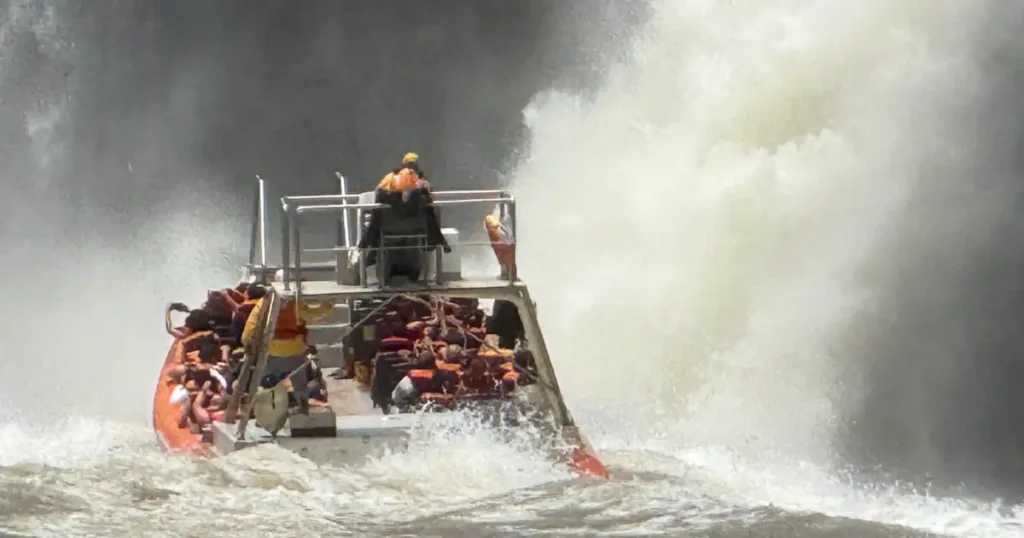
The Macuco Boat Adventure: Soaked and Spectacular
At 10:00 AM, we hopped off at the second stop and boarded the jungle train. The ride was short but magical, passing through lush subtropical rainforest teeming with life.
Our guide led us toward the river at the trailhead, pointing out exotic plants and sharing fascinating tidbits about the ecosystem. The walk was easy yet engaging—a perfect prelude to the excitement ahead.
Down by the river, we found lockers, restrooms, and snack stands to prepare for the boat excursion. We donned rain jackets and wrapped our backpacks in ponchos, but even those precautions couldn’t keep us completely dry. Trust us, you will get soaked—head to toe! Wearing a swimsuit or poncho and stashing valuables in a locker is smart.
The boat ride was nothing short of breathtaking. With stunning views of three waterfalls, it’s an experience like no other. The highlight? The boat plunges into one of the falls, leaving you exhilarated and drenched!
The crew captures the experience on GoPro, with photos and videos available for purchase—a great way to relive the adventure.
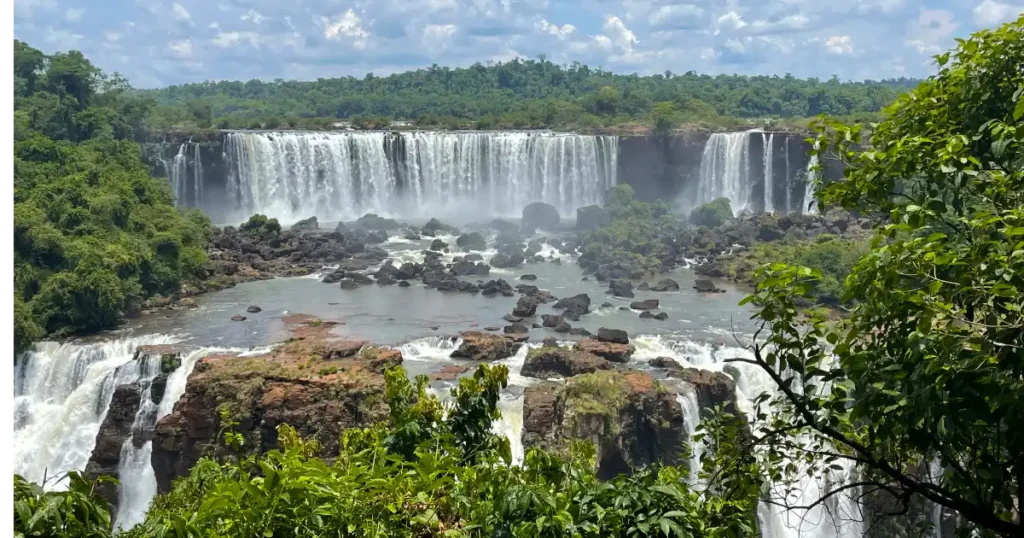
The Cataratas Trail: Awe at Every Turn
After the boat ride, we re-applied sunscreen and bug spray—two essentials—and caught the bus to the third stop. You can also walk conveniently, but the quick bus ride was a welcome break.
Directly across the stop is the iconic Belmond Hotel das Cataratas, where non-guests can enjoy the cocktail bar or restaurant. We saved this treat for later, eager to dive into the Cataratas Trail first.
The mile-long, paved trail is a feast for the senses. With breathtaking views of the falls, gentle inclines, and misty walkways, it’s a must-do. Rainbows often form in the mist, adding a touch of magic to the scenery. Along the way, we spotted vibrant butterflies and exotic birds, making the rainforest feel alive.
We took about 90 minutes on the trail, pausing often to snap photos and marvel at the falls. The final stretch leads to a viewing platform with a sweeping panorama of the falls’ raw power.
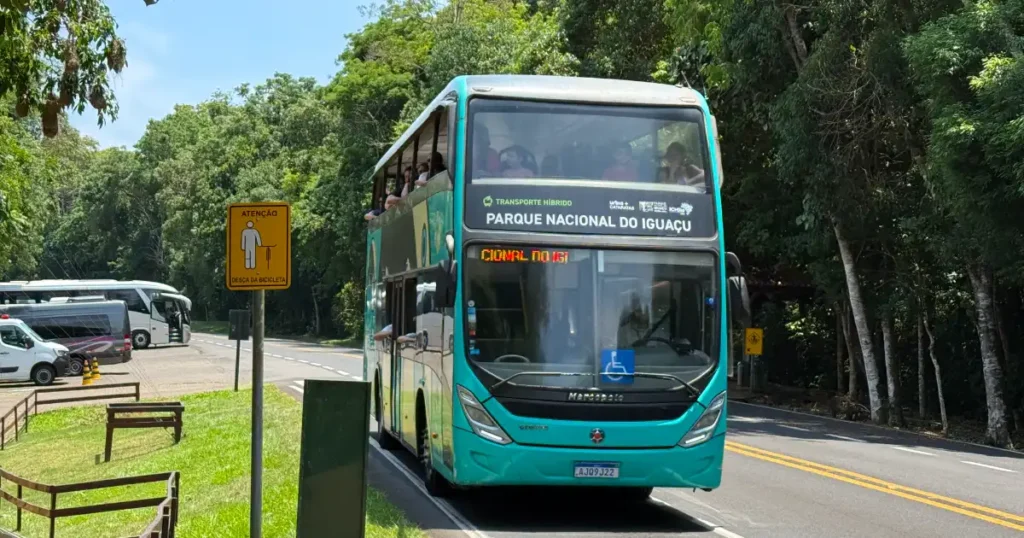
Wrapping Up the Day at Iguazú Falls
Feeling rejuvenated after our refreshing stop, we joined the line to board the bus back to the park entrance. Though the queue seemed daunting at first glance, it moved surprisingly quickly, thanks to the extra buses added to accommodate the late afternoon crowd.
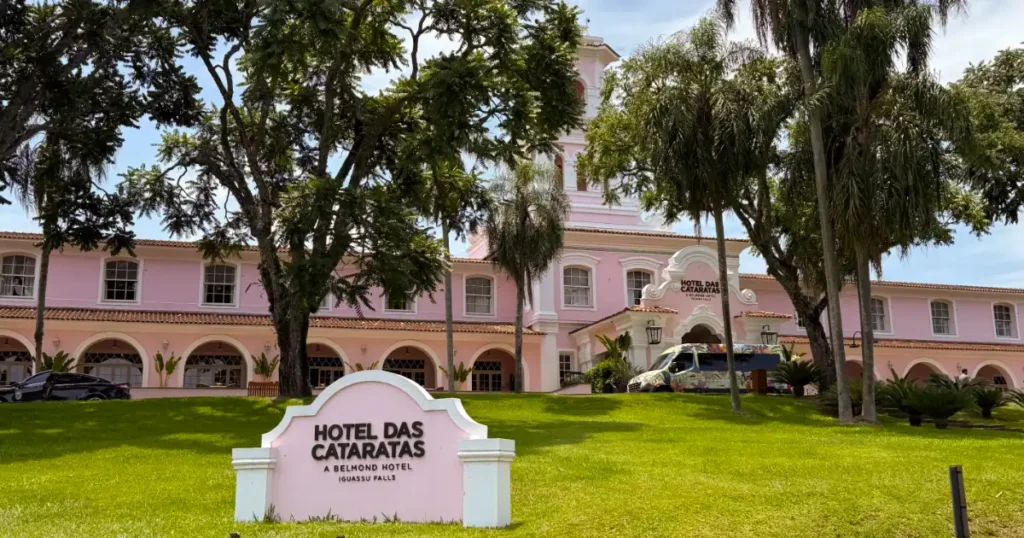
Optional Stop at the Hotel Das Cataras, A Belmond Hotel
If you still have some energy left, consider hopping off at stop 3 for a final visit to the Hotel Das Cataras. Whether a crafted cocktail or a leisurely meal, the hotel offers a luxurious way to cap off your day. However, the early wake-up and day of exploration caught up with us, so we decided to head straight back to our hotel.
Perfect Timing with the Weather
As we made our way through the gift shop, because no adventure is complete without a last-minute souvenir, a torrential downpour began, punctuated by a brief power outage. The timing was on our side as we managed to stay dry and avoid the storm.
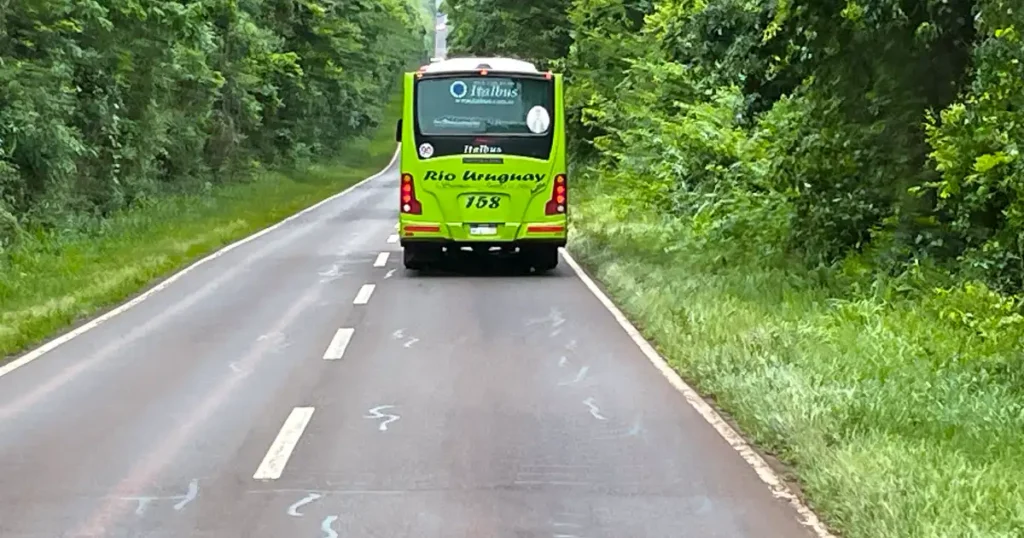
Returning to Puerto Iguazú
We headed to the bus stop near the park exit to catch our ride back to Puerto Iguazú. Remember to have the return ticket you purchased in the morning ready! The driver will tear your ticket in half again during boarding, so keep the remaining portion handy for reboarding after immigration.
Smooth Border Crossing
The border crossing back into Argentina was as smooth as it had been in the morning. Having your passport easily accessible speeds up this process significantly. The evening was settling in when we arrived back at the central bus station in Puerto Iguazú.
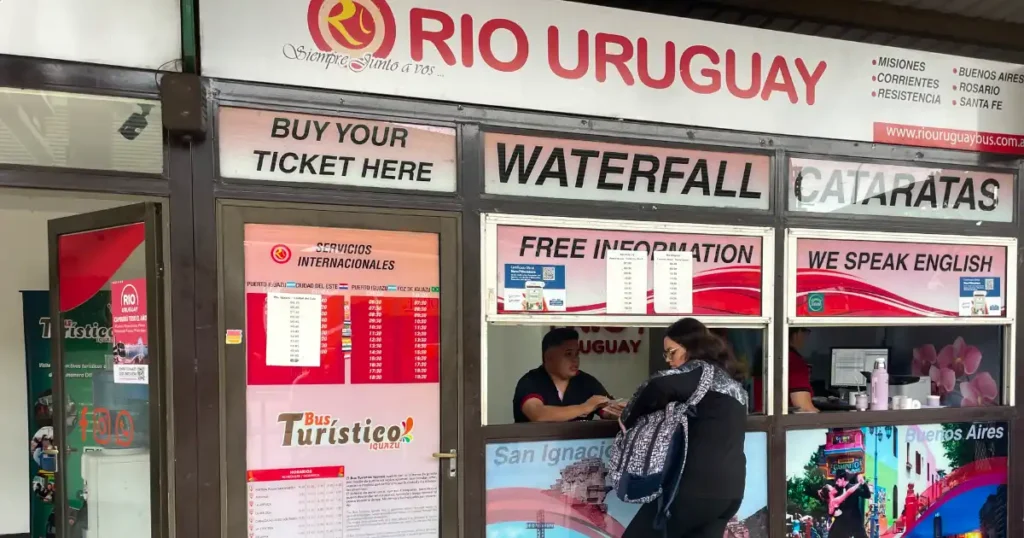
Planning for the Argentine Side
We took the opportunity to purchase tickets for our next day’s adventure to the Argentine side of Iguazú Falls. The 8:00 a.m. bus tickets cost just $11 USD for both of us (11,000 pesos), one way. Securing these tickets in advance gave us peace of mind and ensured a stress-free start for the following day.
A Well-Earned Rest
With plans for tomorrow sorted, we walked across the street to our room, ready to unwind after an unforgettable day exploring the Brazilian side of Iguazú Falls. As we settled in, we couldn’t help but reflect on the breathtaking landscapes, thrilling adventures, and incredible memories we’d made that day. Little did we know, even more wonders awaited us on the Argentine side.
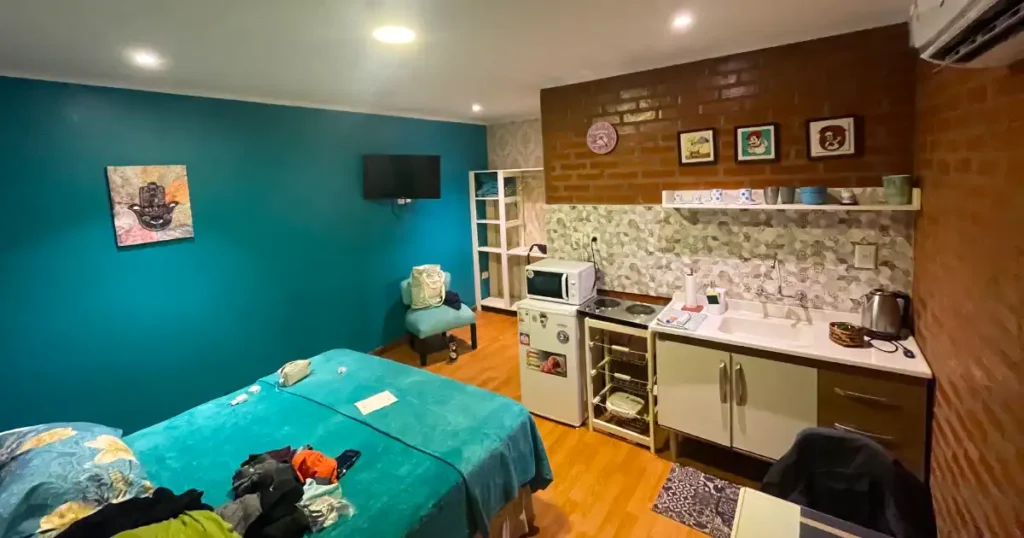
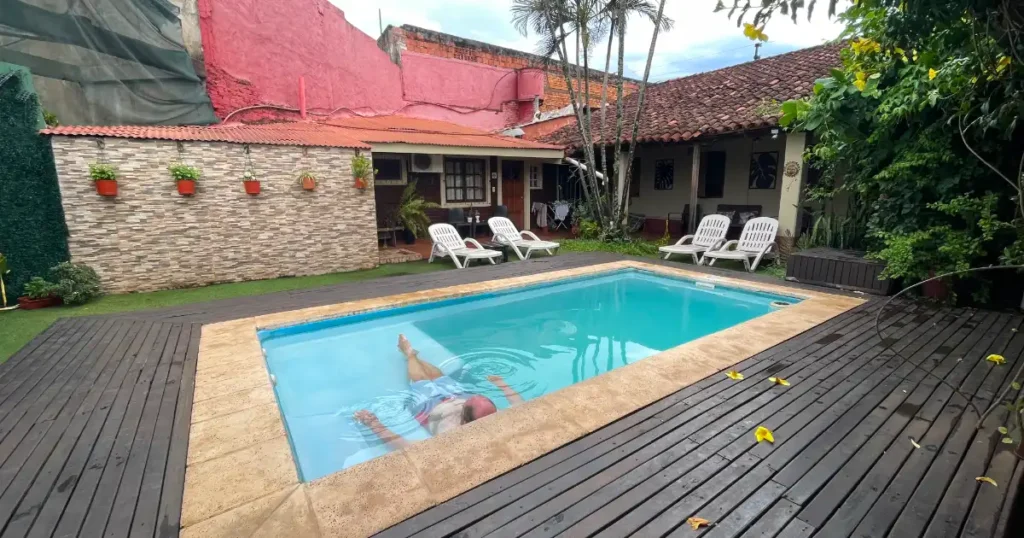
Cozy Accommodations in Puerto Iguazú
Our room in Puerto Iguazú was tucked away behind a gated entrance leading to a charming courtyard at the back of the property. Several apartments surrounded the central space, which featured a pool and plenty of relaxing spots.
A Studio with Everything You Need
The studio apartment was perfectly equipped for our short stay. It offered a comfortable bed, a clean environment, thoughtful touches like coffee, a fully equipped kitchenette, and cooking supplies. It was the kind of place where you could easily settle in for several days—or even a week.
Relaxing Courtyard Amenities
The courtyard was a true highlight. Its seating areas, full BBQ setup, and inviting pool provided a tranquil vibe that made us wish we were staying longer. It’s the ideal spot for slow travelers or anyone looking to unwind for a few days.
Convenient Grocery Shopping
If you plan to cook, you’re lucky; a grocery store just two doors down has everything you need. The apartment’s fully stocked kitchenette made it easy to prepare meals, adding to the appeal for an extended stay.
An Affordable and Welcoming Stay
Our host was incredibly welcoming and made check-in effortless. Payment was seamless, and the rate was just $57 per night, a fantastic deal given the quality and amenities. We’ll share the link to this hidden gem in the description below. It’s an excellent option for anyone visiting Puerto Iguazú.
A Splendid Dinner at La Toscana
After a day of exploring, we decided to make a dinner reservation at La Toscana, an upscale trattoria that came highly recommended.
The Perfect Ambiance
La Toscana, located in a charming hotel, offered the perfect atmosphere for a memorable evening. The service was impeccable, and the food was a true highlight of our trip.
A Culinary Delight
We began our meal with a Raclette appetizer, a savory, cheesy, decadent, and satisfying delight. Then came the main event: parmesan spaghetti prepared in a cheese wheel. The presentation was as impressive as the taste, with perfectly cooked pasta that rivaled dishes we’ve had in Italy.
Being in Argentina, we couldn’t resist trying the parmesan beef, which was tender, flavorful, and expertly cooked. The gorgonzola gnocchi on the side was like little pillows of perfection, pairing wonderfully with the meat.

A Sweet Ending
For dessert, we indulged in a creamy Panna Cotta that was the perfect finale to an exceptional meal.
Worth Every Penny
The total cost for the evening, including a bottle of wine, came to $110. While on the pricier side, the impeccable service and outstanding cuisine made it worth every penny. If you find yourself in Puerto Iguazú, La Toscana is an experience not to be missed.
Preparing for the Next Day
After our unforgettable dinner, we returned to our accommodation, stopping at a convenience store to pick up water, snacks for breakfast, and some treats for our upcoming adventure to the Argentine side of Iguazú Falls.
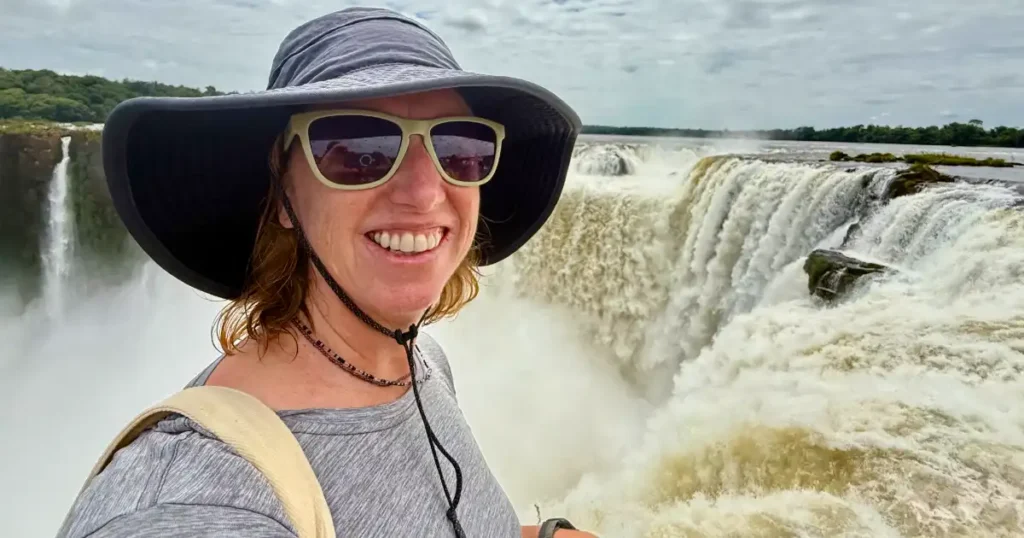
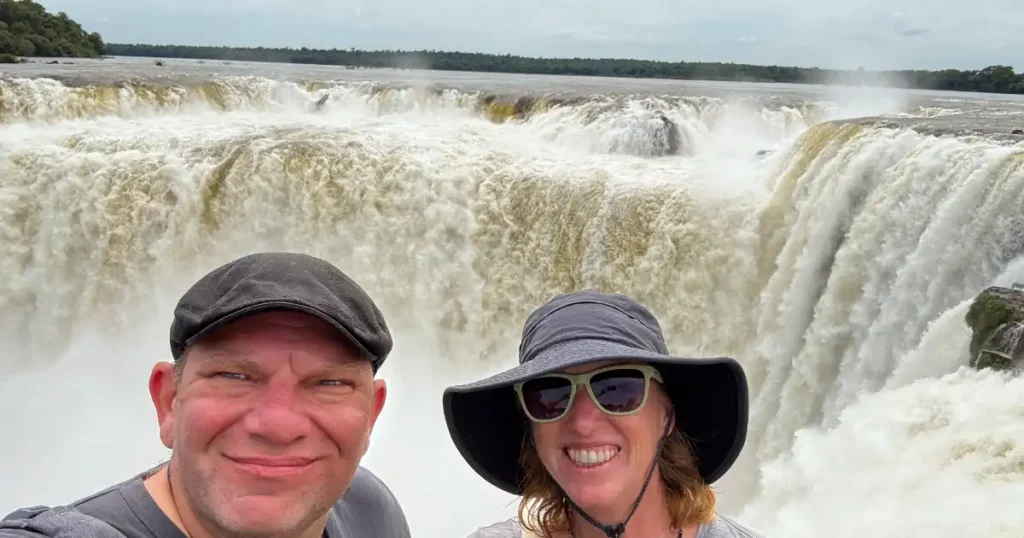
Exploring the Argentine Side of Iguazú Falls
Starting the Day Right
Our second day at Iguazú Falls began with a hot coffee and breakfast before checking out our cozy accommodation. Traveling light with only small backpacks meant we could avoid the hassle of checking luggage or using lockers at the park. While both the Brazilian and Argentine sides offer lockers for a fee, they fill up quickly, especially near the airport on the Argentine side. We decided to keep our bags with us for the day.
Essential Preparations
Before heading out, we packed sunscreen and a strong bug spray with 100% DEET, a lifesaver against the relentless insects around the falls. Trust us, this step is crucial. We saw plenty of visitors with nasty bites, and this simple precaution kept us comfortable throughout the day.
Another important tip is to vaccinate against yellow and dengue fever. The bugs around the falls can be relentless, and protecting yourself is essential.
Getting to the Park
At 8 AM, we caught the bus to the Argentine side of the falls. The bus departed on time, stopping around town to pick up other passengers, and by 8:40 AM, we arrived at the entrance.
Entering the Park
Buying Tickets
Once we arrived, we joined the ticket line. There are lines on both sides of the entrance, so check for the shorter one. If you’re pressed for time, tickets can be purchased online in advance or even on the spot using a smartphone.
To our surprise, this was one of the few places in Argentina that accepted American Express. Tickets were 45,000 pesos per person, which appeared on our credit card as three separate charges:
$54.52 for entry
$28.78 for the National Park Fee
$6.27 for the Tourist Fee
= Totaling $89.57 for two people.
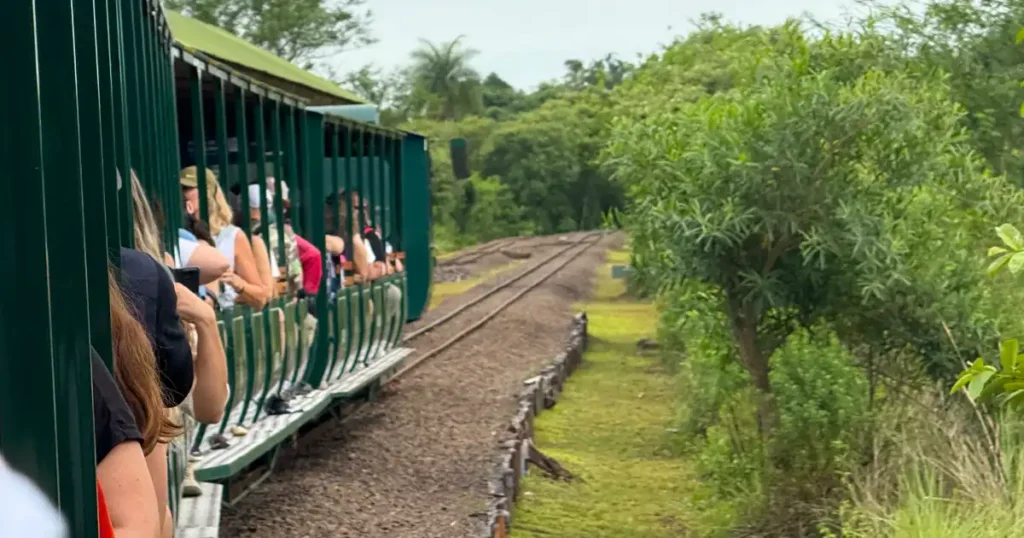
Exploring Exhibits and Getting Train Tickets
Inside the park, the Argentine side is more focused on walking trails, with exhibits providing fascinating insights into the park’s ecosystem and history. Before diving into the exploration, we headed straight to the booth to secure tickets for the El Diablo Station train. Tickets are timed and assigned by groups. Arriving at 9 AM, we secured tickets for the 9:45 AM train.
With some time to spare, we explored the exhibits while waiting. These displays were engaging and provided a great way to pass the time.
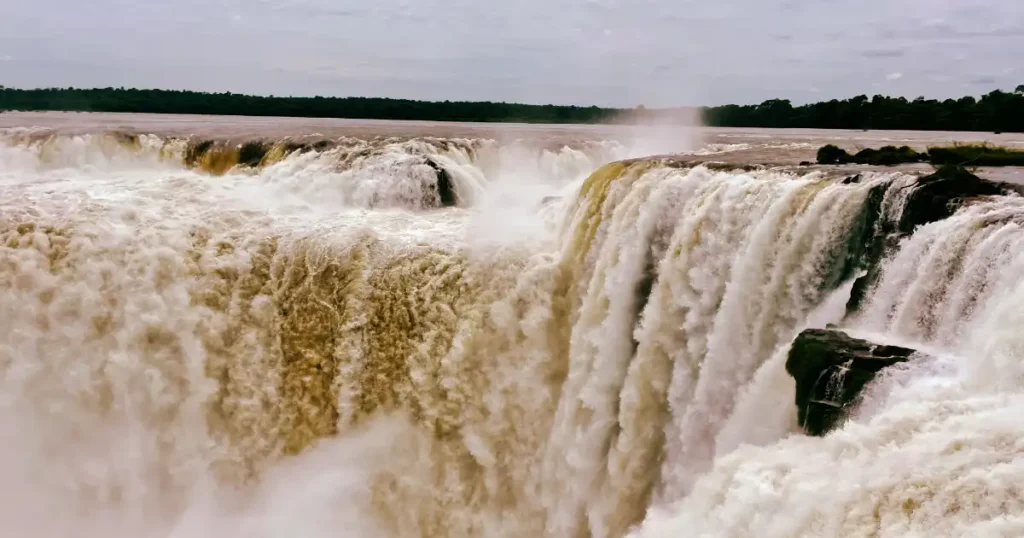
Devil’s Throat: The Iconic View
The Train Ride to El Diablo Station
At 9:40 a.m., we lined up at the central train station for our group’s boarding call. The train ride was short and pleasant. Four passengers were seated per bench, which felt tight but manageable.
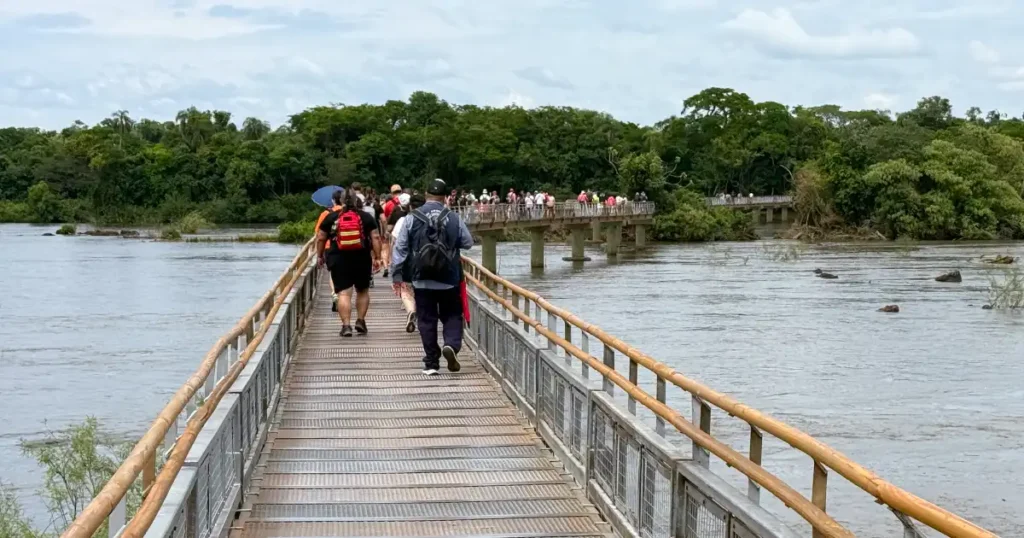
Walking the El Diablo Circuit
We headed straight for the El Diablo Circuit when we arrived at El Diablo Station. This metal walkway takes you over the falls, leading directly to the iconic Devil’s Throat—one of the most popular spots in the park.
The path was breathtaking, with vibrant butterflies fluttering around us and incredible views of the falls. Unlike the Brazilian side, this perspective places you directly above the mighty cascades.
At the Devil’s Throat Lookout
The walkway narrows at the end, where visitors gather for photos, so expect crowding. However, the view is worth the wait. Standing above the roaring falls and feeling the cool mist is a surreal experience.
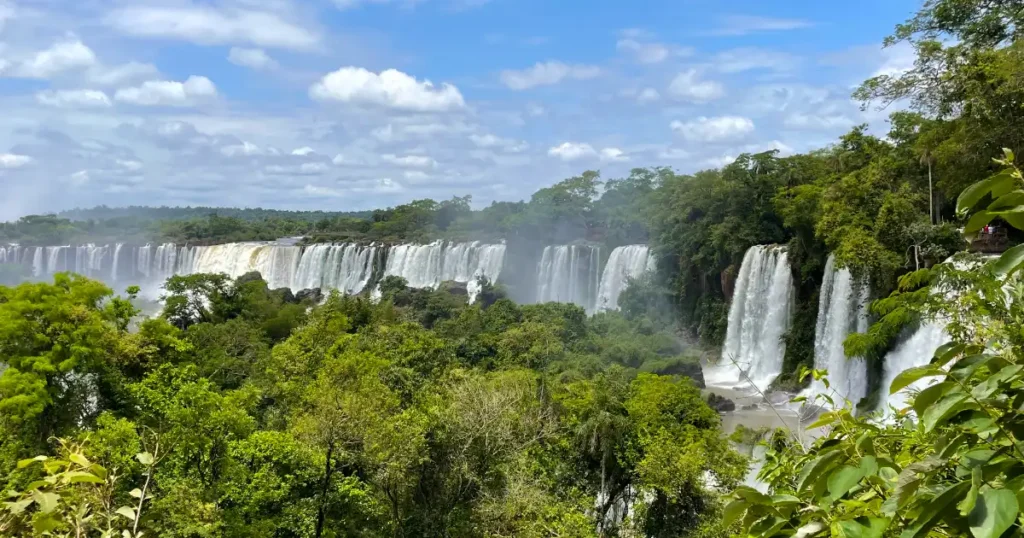
Trails on the Argentine Side
Cataratas Station: A Base for Exploration
After enjoying Devil’s Throat, we returned to the train station and took the train to Cataratas Station. While walking along the trail is possible, we opted for the train to save energy for the rest of the park.
Cataratas Station has facilities, a snack bar, and plenty of seating—perfect for taking a break before hitting the trails. The Upper Trail and Lower Trail are marked from here, making navigation easy.
The Upper Trail
The Upper Trail offers breathtaking views of waterfalls like Dos Hermanas (Two Sisters), Chico, and Bosetti. Elevated metal walkways make it easy to navigate, and plenty of vantage points exist for stunning photos and panoramic views.
A highlight of this trail is watching the boat excursions below as they approach the base of the falls, an excellent spot for photography.
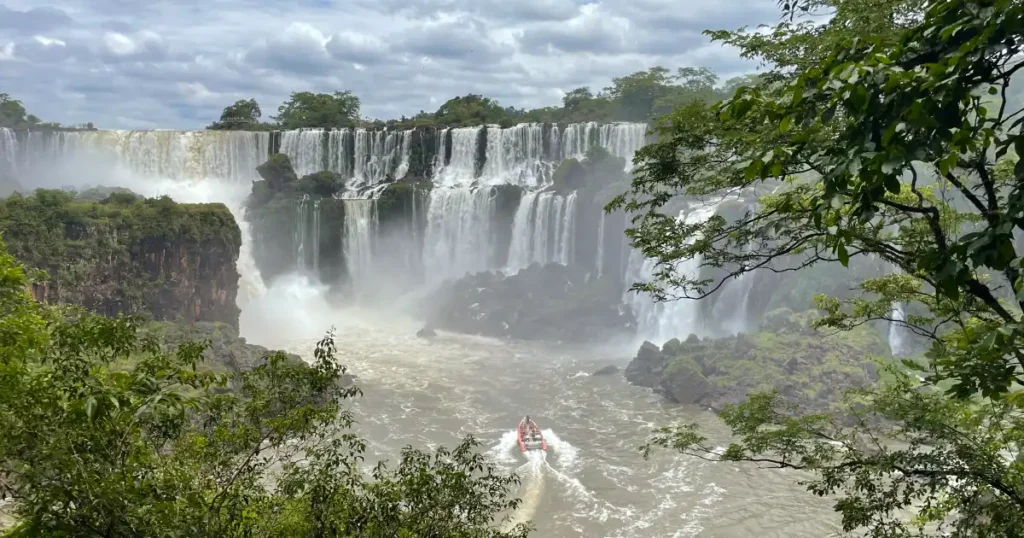
The Lower Trail
Descending to the Lower Trail, we were greeted with an entirely different perspective. Here, you’re closer to the falls, experiencing their immense power and beauty from below.
Each stop along the trail brings you closer to the cascades, and some vantage points offer a refreshing mist, perfect after a hike. Vibrant butterflies and colorful birds enhance the magical atmosphere.
Cooling Down and Reflecting
After finishing the Lower Trail, we returned to Cataratas Station and caught the train back to the central station. Before leaving, we treated ourselves to two lemon slushies for $8, a perfect way to cool off after a day of exploring.
As we made our way out of the park, sipping on our slushies, we soaked in the last views of Iguazú Falls, reflecting on an unforgettable experience filled with breathtaking landscapes, vibrant wildlife, and memorable adventures.
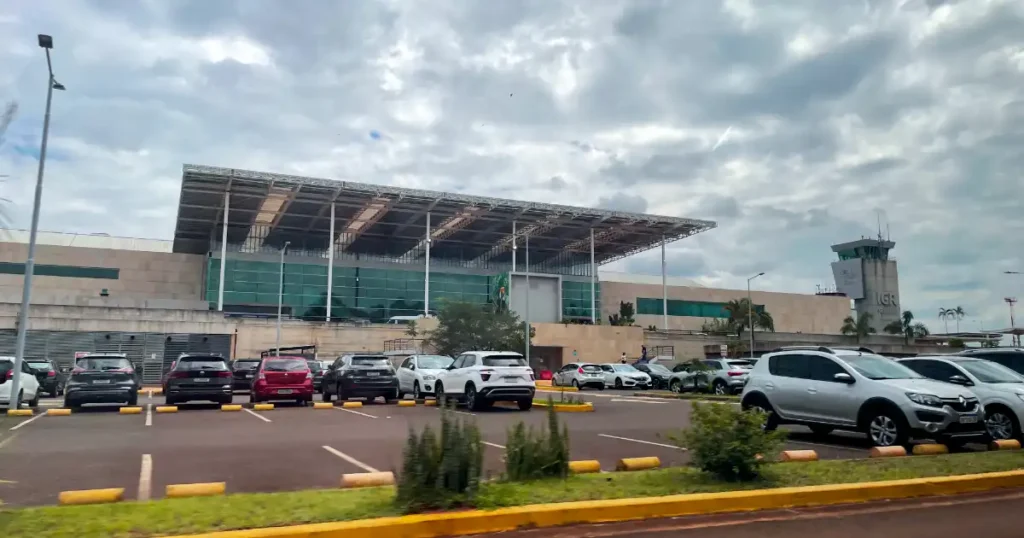
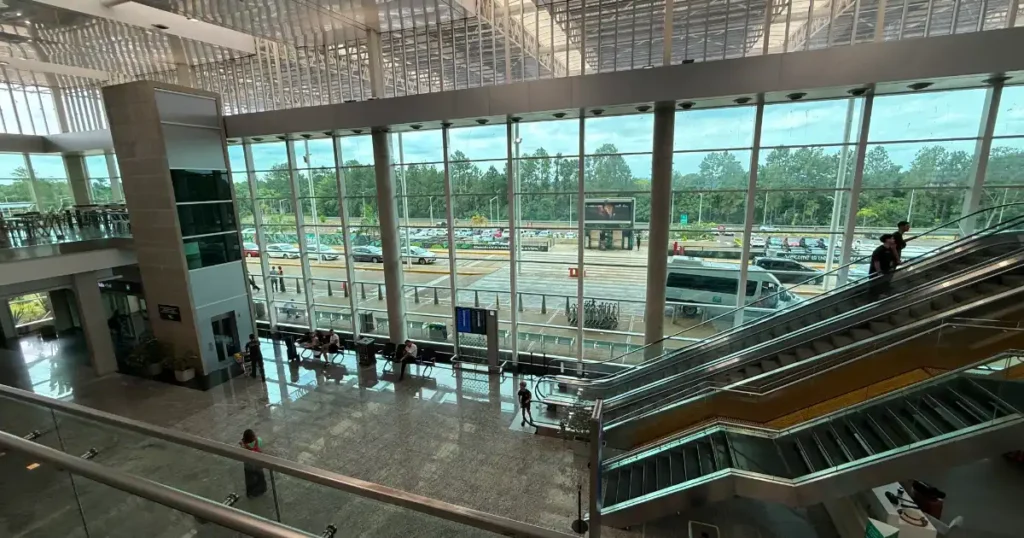
Wrapping Up Our Iguazú Adventure
A Convenient Ride to the Airport
As we left the park, a row of taxis awaited passengers outside the entrance. The fixed fare to the airport was 18,000 pesos (about $18 USD), and we were lucky to find a driver, Myriam, who didn’t charge extra for payment by credit card.
Myriam’s brand-new taxi was spotless, air-conditioned, and comfortable, making the ride both comfortable and efficient. The trip to the airport took just 12 minutes, far faster and more convenient than taking the bus, which would have required a trip back to the central station in Puerto Iguazú and cost 22,000 pesos for two people.
Relaxing at Iguazú Airport
We arrived at the airport around 3 p.m. and were relieved to find no lines at security, which allowed us to breeze through the process.
For those with Priority Pass lounge access, such as through an Amex Platinum card, Iguazú Airport offers a lounge perfect for unwinding before your flight. Located conveniently across from our gate, the lounge provided complimentary beer and wine, various cold foods, clean and spacious bathrooms, and plenty of outlets to recharge devices.
We used this to enjoy a light meal, charge our devices, and relax after a long, adventurous day.
On-Time and Back to Buenos Aires
Fortunately, our flight was on schedule and without delays. Interestingly, the only cancellation we noticed was from FlyBondi, so it’s worth monitoring airline reliability when planning your trip.
Once we landed in Buenos Aires, we ordered an Uber for $6, which conveniently picked us up at the curb outside the airport. Alternatively, travelers can use the taxi system in the arrivals area. Scanning a QR code near McDonald’s allows you to book a taxi with an upfront price and pay the driver directly after selecting your vehicle.
With evening traffic, it took about 25 minutes to return to our apartment in Palermo, where we ended the day with a relaxing soak in the hot tub.
Reflecting on Our Iguazú Experience
This trip was nothing short of spectacular! Between the countless photos, a fabulous dinner, and unforgettable memories, we firmly believe the Brazilian and Argentine sides of Iguazú Falls are must-visit destinations. Each offers unique perspectives and breathtaking views, making the experience truly one of a kind.
We highly recommend booking Myriam in advance for airport transportation. Her WhatsApp QR code is included below for easy access.
Budget Breakdown
Here’s the full breakdown of our trip expenses:
- Entrance Fees: $257.96
- Transportation: $404.51
- Food and Drink: $146.46
- Accommodations: $57.73
Tips for Saving
- Flights are often the most significant expense, especially during high season. Book early and time your visit to snag the best deals.
- Luggage: We saved by skipping checked luggage and carry-ons, allowing more flexibility in our plans.
Dining: While we splurged on dinner at La Toscana, there are plenty of affordable dining options in Puerto Iguazú.
Is Igazú Falls Worth It?
We hope you’ve enjoyed following our bucket-list adventure to Iguazú Falls. Please comment below if you feel, as we do, that this adventure is worth our shared budget. Is this reasonable from your perspective? Do you have any questions or want to share your own experience? Please add your comments below.

